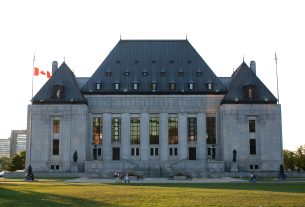Climate change is one of the most important challenges of our time. Although reducing energy use and limiting the emission of greenhouse gases are the most effective solutions, this may not be feasible in many countries yet. On the other hand, replacing naturally treeless ecosystems (such as grasslands, shrublands and wetlands) with tree plantations (afforestation) is increasingly promoted to mitigate climate change and carried out across the world through large scale schemes. The goal with this approach is to fix more carbon in plant biomass and remove carbon dioxide from the atmosphere. Potential benefits of afforestation projects are increased carbon sequestration, reduced soil erosion, growth of local economies, and provision of fibre and shelter for local communities. One of the main incentives for the adoption of this natural climate solution is the economic market of carbon credits which, through the adoption of certified standards, can also make afforestation projects economically profitable. However, the long-term effectiveness of afforestation as a solution to climate change has been called into question. With an international team including Martin Nuñez, Romina Dimarco, Juan Paritsis, Tess Peterson, Duane Peltzer, Kerri Crawford, Matthew McCary, Kimberly Davis and Aníbal Pauchard we address the unintended negative impacts of afforestation at a global level, outline possible solutions to avoid these consequences, and identify research opportunities for better understanding the long-term impacts of this natural climate solution.
The review
While afforestation is being widely promoted to mitigate climate change, its carbon sequestration potential is limited. In fact, to mitigate anthropogenic emissions only through afforestation would require converting more than one-third of global grasslands into tree plantations. In many cases, conversion of naturally treeless ecosystems to tree plantations may not increase total carbon sequestration because the main carbon pool in these ecosystems, soil carbon, may be substantially reduced through afforestation. The impact of afforestation on soil carbon depends on initial soil carbon levels, annual rainfall, time since afforestation, and tree species planted. On the other hand, the restoration of forests throughout the world is much more effective at increasing carbon sequestration. Even if afforestation projects do increase total carbon sequestration, they can still contribute to a warming effect because trees absorb more solar energy (they have lower albedo, so they reflect less solar radiation) than other life forms (such as grasses). The changes in albedo caused by afforestation depend on latitude, altitude and aridity.

This figure shows potential afforestation impacts (coarse approximation of expected outcomes) on aboveground plant carbon, local economies, soil carbon, albedo, fire severity, water consumption, biodiversity and tree invasions.
Due to climate change, fire risk is expected to increase in many areas of the world. Afforestation will also increase fire intensities and, when burned, tree plantations release large portions of the carbon previously sequestered, calling into question their effectiveness as a strategy to mitigate climate change. On the other hand, grasslands store most of their carbon belowground, a carbon sink which is better protected from fire. Further, trees use more water than other life forms, which is why afforestation drastically affects hydrological cycles, reducing local water availability. This reduction in water availability is especially relevant for areas where water is scarce and further reductions will create shortages for local populations. Native plant and animal communities are also threatened by the replacement of treeless ecosystems by tree plantations, which drastically modifies native habitats. Native plants richness and diversity are strongly reduced in grasslands, shrublands and heathlands due to afforestation, as well as bird diversity in grasslands. Consequently, afforestation can also reduce the ecosystem services provided by the ecosystems which are replaced by trees, namely pollination, provisioning of forage, wild food and medicinal herbs, as well as recreation and aesthetic value of modified ecosystems.
Afforestation frequently causes tree invasions, which produce impacts that are similar in some respects. However, tree invasions are not circumscribed to a planted area, but affect an ever-increasing area as seeds are dispersed, threatening native systems across entire landscapes surrounding tree plantations. As is the case with afforestation, tree invasions into treeless ecosystems will have highly variable effects on carbon sequestration and overall effect on climate change. Tree invasion also increases wood fuel, potentially increasing fire intensity, which may release to the atmosphere large portions of the fixed carbon, undoing their positive effect on carbon sequestration. Tree invasions also reduce grasslands and shrublands plant diversity and productivity, modify nutrient cycles and soil biotic communities, and reduce local water availability.

This picture shows a valley in northern Patagonia (near Bariloche) where native grasslands have been replaced by tree plantations. In turn, these plantations have originated invasive populations that are spreading throughout the valley.
While planting trees can potentially help mitigate climate change, afforestation should not be considered as the ultimate solution, but rather be integrated into a strategy including multiple approaches. The positive and negative impacts of planting trees in naturally treeless ecosystems are idiosyncratic, depending on the location where trees are introduced, the time period trees are allowed to grow, and risks of spread and impacts associated with specific tree species. Importantly, the potential for afforestation should not diminish efforts to reduce deforestation and forest degradation globally, since forests have a much larger potential for carbon sequestration. The numerous negative impacts of tree invasions originating from afforestation bring the need to actively manage them. Therefore, certification standards should also require that plantation owners become responsible for the management of potential tree invasions. Future research should study the impact of tree invasions on carbon sequestration of treeless ecosystems and overall cooling effects across a wide range of contexts (tree density, precipitation, altitude, latitude), so that invasions are not favoured by the unfounded assumption that they help mitigate climate change.
Follow Jaime @jaimemoyanog & Martin @Martin_A_Nunez
Read the full piece ‘Unintended consequences of planting native and non-native trees in treeless ecosystems to mitigate climate change’ here: https://besjournals.onlinelibrary.wiley.com/doi/10.1111/1365-2745.14300

